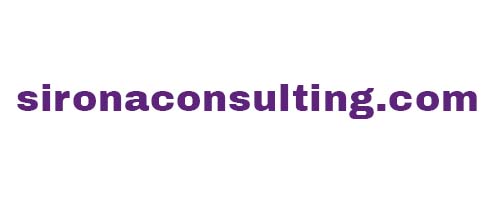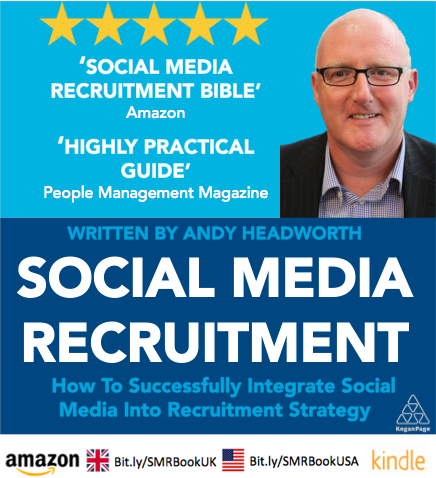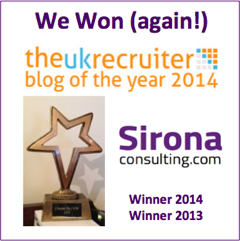10 Reasons Why There Is a Disconnect On LinkedIn Between Recruiters and Candidates
Why do so many recruiters make wrong assumptions with regards to prospective candidates when they use LinkedIn? We all know what happens when you make assumptions, yet every single day, recruiters are making some huge ones directly regarding their target audience - candidates - on the world’s largest professional network, LinkedIn. And if you are currently saying to yourself, ‘this doesn’t apply to me’, think again - it applies to all of us who use LinkedIn because that is the way LinkedIn have got us all using it!
A famous quote from Yoda (from Star wars, if you didn’t know) says:
“LinkedIn you know not, differently you must think”
(OK I may have made that bit up, but I am sure it is in the film out-takes somewhere).
Let me explain and you will understand what I mean when I say there are 10 reasons why there is a disconnect on LinkedIn between recruiters and candidates.
- Recruiters use LinkedIn every day, candidates do not. Have you ever thought how many times someone who has a LinkedIn profile, and who isn’t either a recruiter or an active job seeker, uses LinkedIn? Well the answer is a less than you think they do! The reality is probably once a month for people who are happy in their work and only go there when prompted by all those pesky LinkedIn emails or to add/accept a friend connection to their network. “So what” I hear you say. Well it means that these people who you want to reach, are not updating their details, they are not then seeing your status updates, they are not seeing the jobs you paying money to post, not seeing the company status updates, and very importantly are very likely not as skilled and knowledgeable about all the intricacies of using LinkedIn.
- Recruiters (should) have full LinkedIn profiles, candidates do not. Every day you struggle to find the people you want when searching on LinkedIn, don’t you? Many times it is because the people you are searching for simply don’t have the desired keywords within their LinkedIn profiles. This may well be an oversight, but in many more cases (especially people with sought after skills), individuals are downsizing their LinkedIn profiles to the basics, and removing all the relevant information you would normally use to find them. This is the result ofLinkedIn being based on user generated content. Even things like job-titles regularly get changed to something completely different, sometimes making it very difficult to find people.
- Recruiters use a primary email address on LinkedIn, candidates use a secondary one . How many messages and InMails do you send candidates that appear to have disappeared into a black hole? As I said in no.1, for many people on LinkedIn it is not a primary social network for them , so they choose not to use a primary email address as their contact email. This means that they many not see your emails, InMails or messages as often, if at all. Several developer friends of mine never bother ever checking them because they know it will only be recruiters contacting them! When you consider LinkedIn say that a 30% InMail rate is good (that is a 70% fail rate by the way), you know, they know they have a problem with their messaging on their platform!
- Recruiters use advance searching on LinkedIn, candidates use 2/3 words. When I say ‘advance searching’ I simply mean the advanced search within LinkedIn, because many recruiters still don’t know how to deep search LinkedIn effectively. However most people who use LinkedIn less often, simply use the search bar at the top of the page, and then use only two or three words to search (this mirrors Google search patterns). So if they are looking for a recruiter to engage with you or connect with you, had better hope you have recruiter or recruitment in your headline on your profile, or it is very likely they will never find you easily.
- Recruiters use InMails within LinkedIn, candidates think they are spam. LinkedIn encourage people to buy and use InMails as a method to reach out to and engage people on LinkedIn, yet they fail 70% of the time ( see no.3)! The reason for this is partly in no.2 and partly because many people I speak to (non-recruiters) know the only people that use InMails are recruiters and sales people - and they don’t want to speak to either of them. There are other methods than using InMails to connect with candidates.
- Recruiters (try to) join industry groups on LinkedIn, candidates (may) join interest groups. This is a big mistake recruiters make. They seemingly just try to join the obvious industry groups, assuming that all the candidates will also join them. They don’t. Non-recruiter types join groups that are of interest to them such as alumni or network groups - yes they may include some main groups but not as often as you would like. If you don’t believe me, check out the groups your target audience are on by looking at the bottom of people’s profiles and actually seeing the groups they are members of. I guarantee they will surprise you.
- Recruiters want to strategically build LinkedIn industry networks, candidates are happy to add friends and industry peers. How many invites do you (recruiters) have outstanding on LinkedIn? 100, 200? For most of the reasons above, many people don’t want to connect with recruiters - unless they are actively looking for a new role. As that only represents 15% of the platform according to LinkedIn themselves (85% passive, 15% active member breakdown), that is an awfully large number of the 313 million members that are not interested. It makes personalising the connection message more important than ever. You do personalise them don’t you?
- Most recruiters only use LinkedIn while at their desktop, over half of candidates use it via mobile/tablet. Self explanatory really - and I have asked so many recruiters this question to get this answer it scares me. 56% of all LinkedIn’s traffic comes from mobiles or tablets, yet amazingly still too many recruiters don’t have the LinkedIn mobile app on their mobile device. If you have the app, you can easily connect with people without needing an email address to do so. A brilliant tip regarding the mobile app is that if you add “https://” to your “www” address you add in your summary or other content, they actually become clickable links via the mobile and tablet apps. I am sure you can see the benefit of doing that.
- Recruiters use LinkedIn Monday - Friday, 8am - 6pm, candidates use it early am/late pm and weekends. One of the busiest times on LinkedIn is on Sunday evenings between 7 -10pm. Other busy times are the daily commuting times - before and after office hours, and at weekends. Recruitment has never just been a 9-5 job, yet when it comes to trying to engaging with people on the world’s no.1 professional network, way too many recruiters work that philosophy when using LinkedIn and stick to office hours.
- Recruiters rely on LinkedIn, while candidates use other social networks by choice. On average (depending on which survey you read), people now use 4 or five social networks when online - which may or may not include LinkedIn. Recruiters on the other hand still only primarily use LinkedIn for finding people at work. I see this every single week when working with both recruitment agencies and in-house teams. The simple answer is that you have to go where your target audience is - whichever social network that is and not keep assuming LinkedIn is the only way forward.
Just for the record, I am not picking on recruiters here or even trying to question how they do their job. I have written this post to try and make you think about how you use LinkedIn and how other people view the same platform you use. All the observations have come from the many workshops I have done, as well as user surveys and conversations I have with non-recruiters on LinkedIn.
If you can enlighten me with any more recruiter - candidate disconnects I would love to hear about them in the comments below.
If LinkedIn is still causing you a challenge in your company, connect with me and let’s talk.



